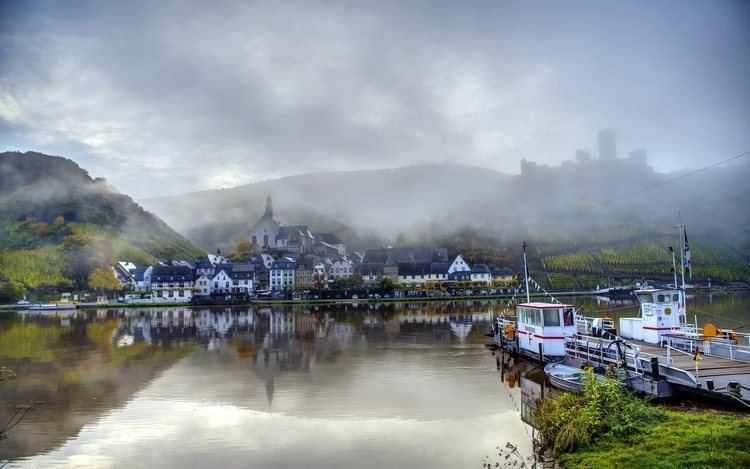Time zone CET/CEST (UTC+1/+2) Area 7.4 km² Population 830 (31 Dec 2008) Dialling code 02673 | Elevation 95 m (312 ft) Postal codes 56821 Local time Thursday 10:20 AM Postal code 56821 | |
 | ||
Weather 11°C, Wind SW at 13 km/h, 97% Humidity | ||
Ellenz poltersdorf
Ellenz-Poltersdorf is an Ortsgemeinde – a municipality belonging to a Verbandsgemeinde, a kind of collective municipality – in the Cochem-Zell district in Rhineland-Palatinate, Germany. The winegrowing centre belongs to the Verbandsgemeinde of Cochem, whose seat is in the like-named town.
Contents
- Ellenz poltersdorf
- Map of Ellenz Poltersdorf Germany
- Winzerhoffest weingut schinnen boos ellenz poltersdorf
- Location
- Nearby municipalities
- Extent of the municipal area
- Land use
- History
- Municipal council
- Mayor
- Buildings
- Ellenz
- Poltersdorf
- Economy and infrastructure
- References
Map of Ellenz-Poltersdorf, Germany
Winzerhoffest weingut schinnen boos ellenz poltersdorf
Location
The municipality lies on a bow in the river Moselle in the middle of the Cochemer Krampen, a 24-kilometre-long stretch of the Moselle made up of many winding bows. Ellenz-Poltersdorf lies on a point bar, which towards the southeast flattens out as it reaches the Moselle.
Nearby municipalities
The district seat of Cochem, which is also the seat of the Verbandsgemeinde administration, lies some 7 km downstream. Mayen is about 30 km away, and Koblenz is 50 km away. Directly across the Moselle is the small community of Beilstein, which is linked to Ellenz-Poltersdorf by ferry.
Extent of the municipal area
While Ellenz-Poltersdorf’s municipal area stretches along both sides of the Moselle, mainly in the form of wooded land, the two constituent communities of Ellenz and Poltersdorf both lie on the river’s left bank, where most of the vineyards are also found, and therefore most of the winegrowing estates within the municipal area. The best known of these is Ellenzer Goldbäumchen
Land use
Expressed as percentages of the total area, land use in the municipality breaks down thus (as at 31 December 2007, source: Statistisches Landesamt):
History
About 1100, Ellenz had its first documentary mention in a directory of holdings from the Karden Monastery. Poltersdorf’s first documentary mention comes from 1178. Until the early 14th century, there was an Imperial Vogtei (Reichsvogtei) of Ellenz-Poltersdorf. The overlordship held by the Electorate of Trier was swept away in 1794 with the French Revolutionary occupation. In 1815 Ellenz-Poltersdorf was assigned to the Kingdom of Prussia at the Congress of Vienna, belonging until 1945 to the Rhine Province. Since 1946, it has been part of the then newly founded state of Rhineland-Palatinate.
Municipal council
The council is made up of 12 council members, who were elected by majority vote at the municipal election held on 7 June 2009, and the honorary mayor as chairman.
Mayor
Ellenz-Poltersdorf’s mayor is Hans Dietmar Schausten.
Buildings
The following are listed buildings or sites in Rhineland-Palatinate’s Directory of Cultural Monuments:
Ellenz
Poltersdorf
Economy and infrastructure
Within the limits of the constituent community of Ellenz, not far from the Fankel Weir, is found the RWE Power AG main control centre, from which all hydroelectric stations at weirs on the German sections of the Moselle and the Saar are controlled.
